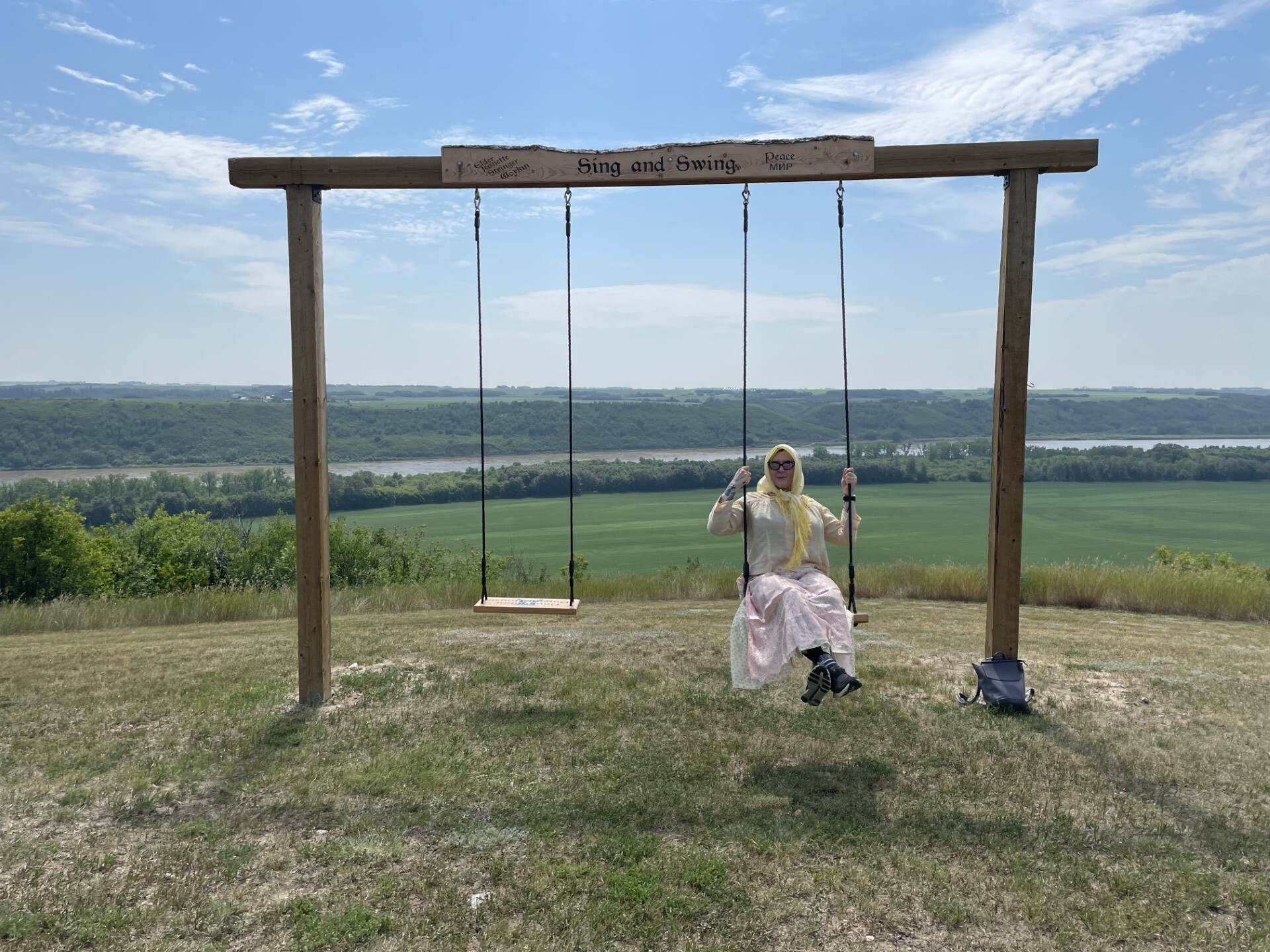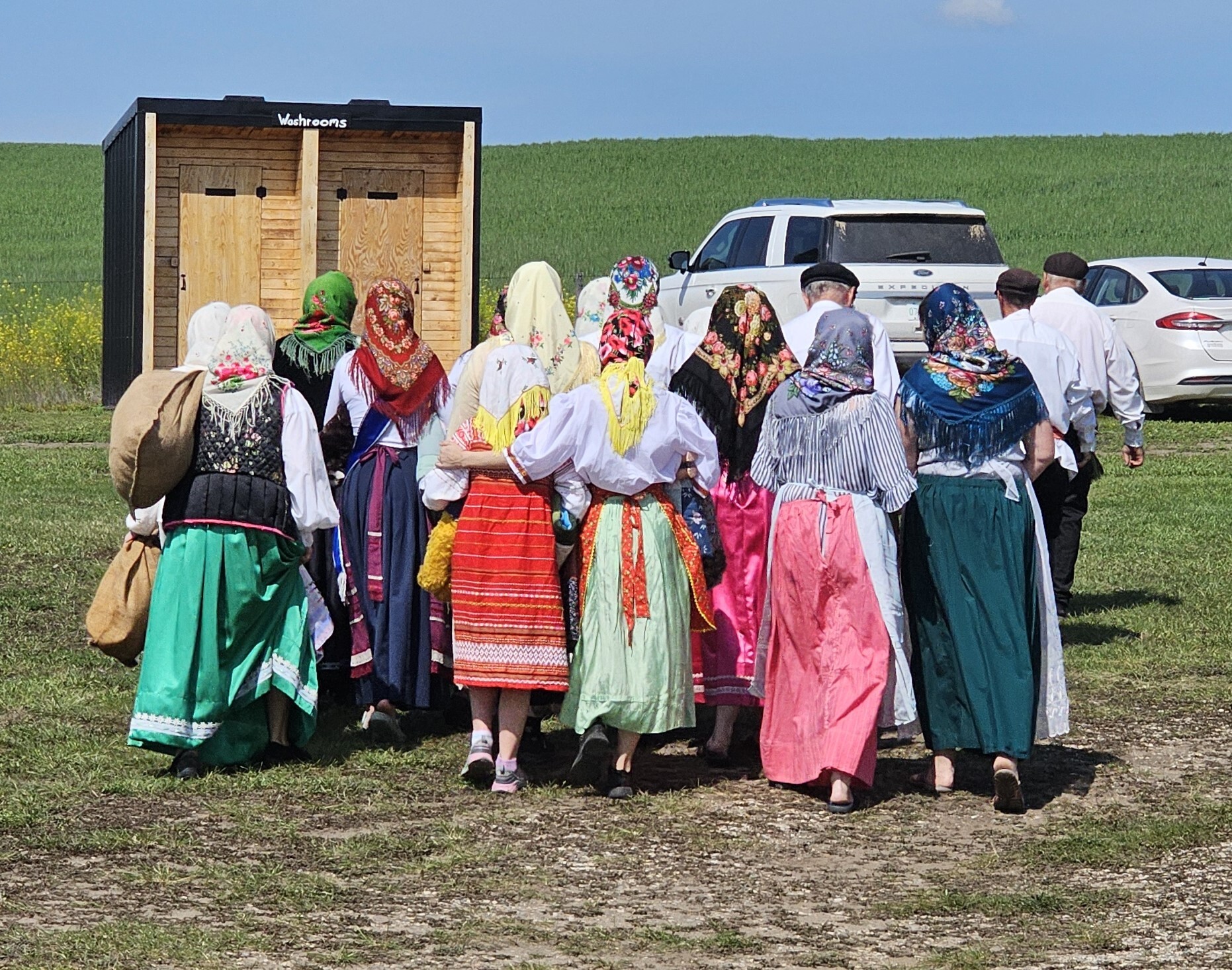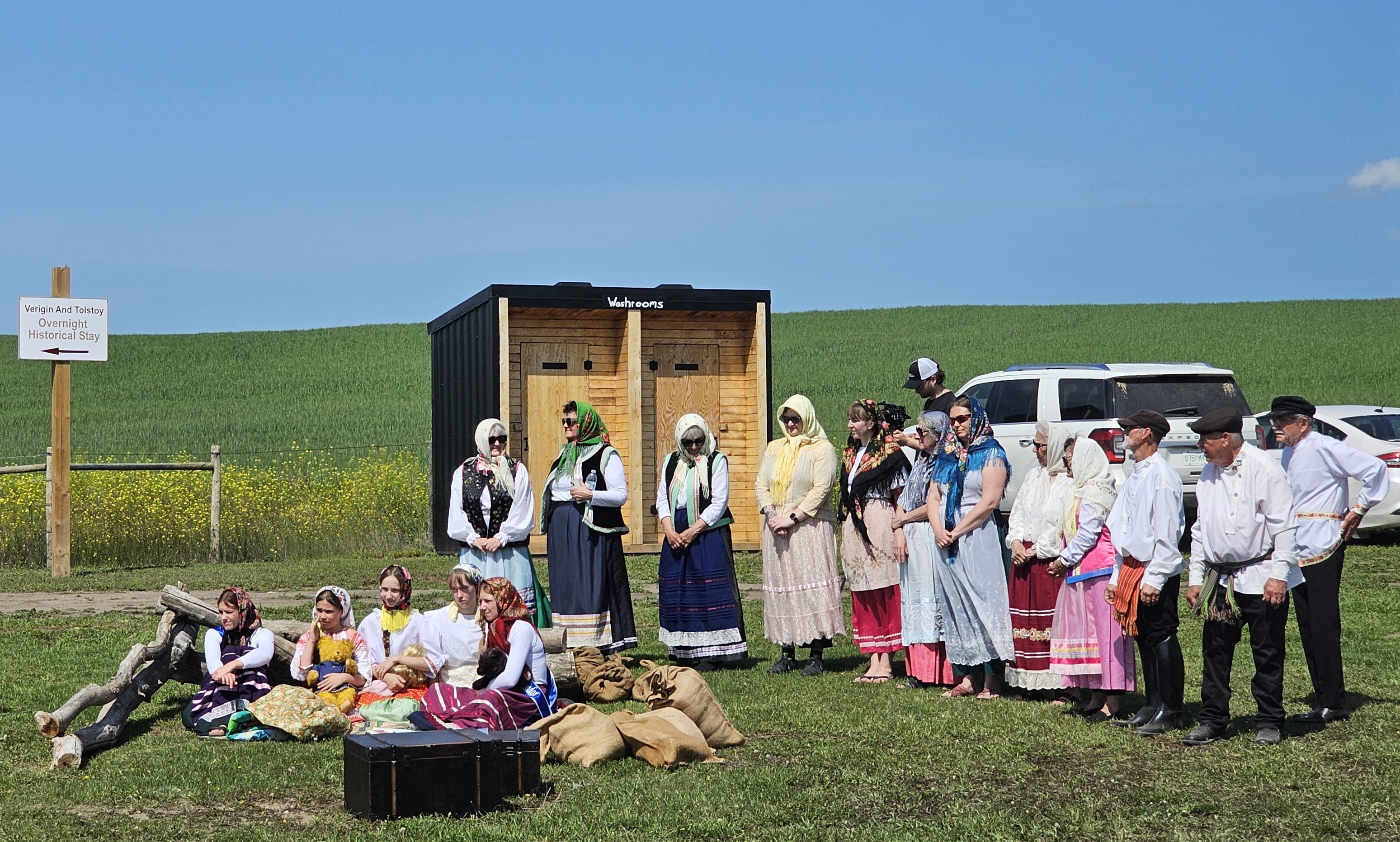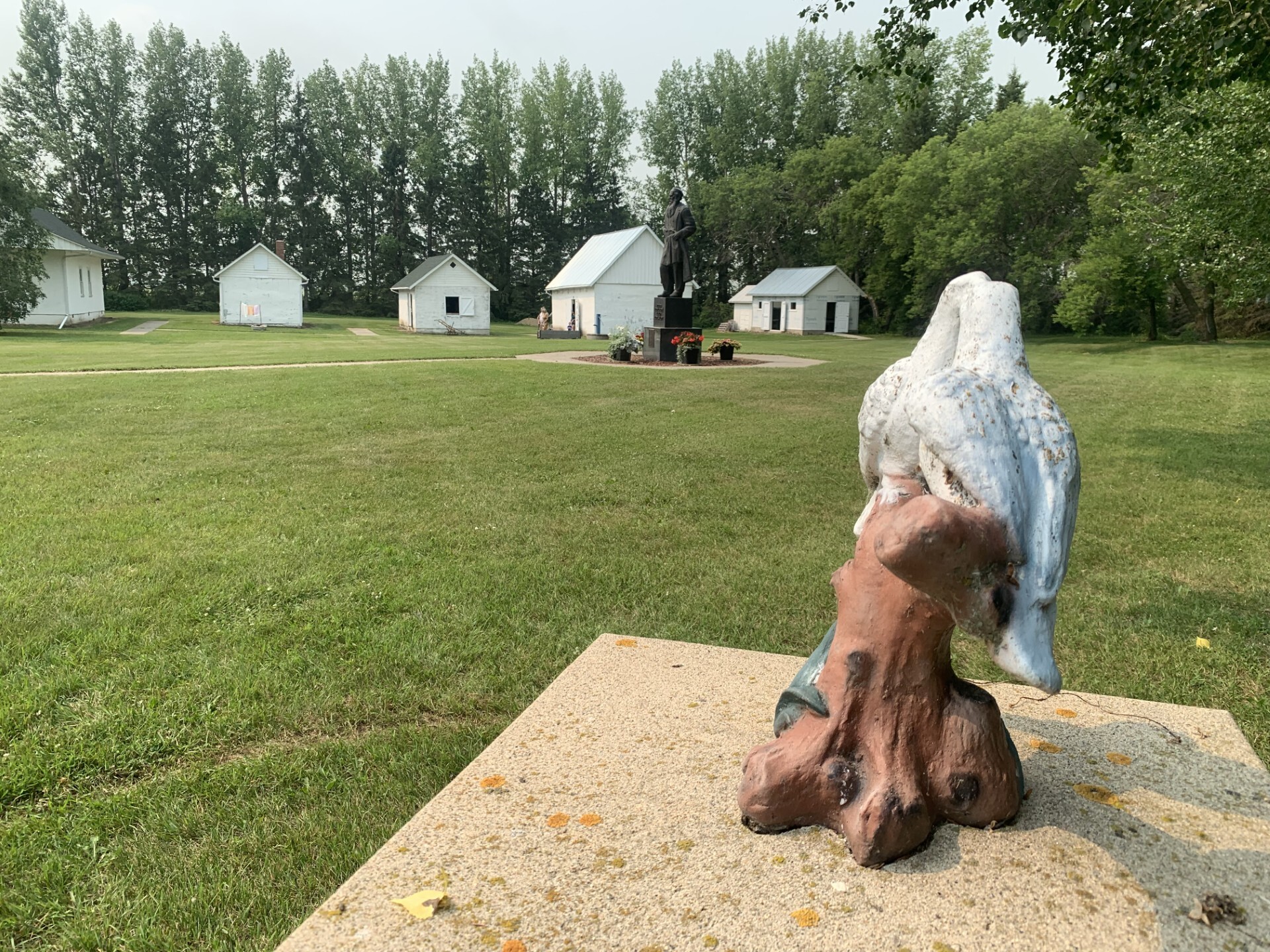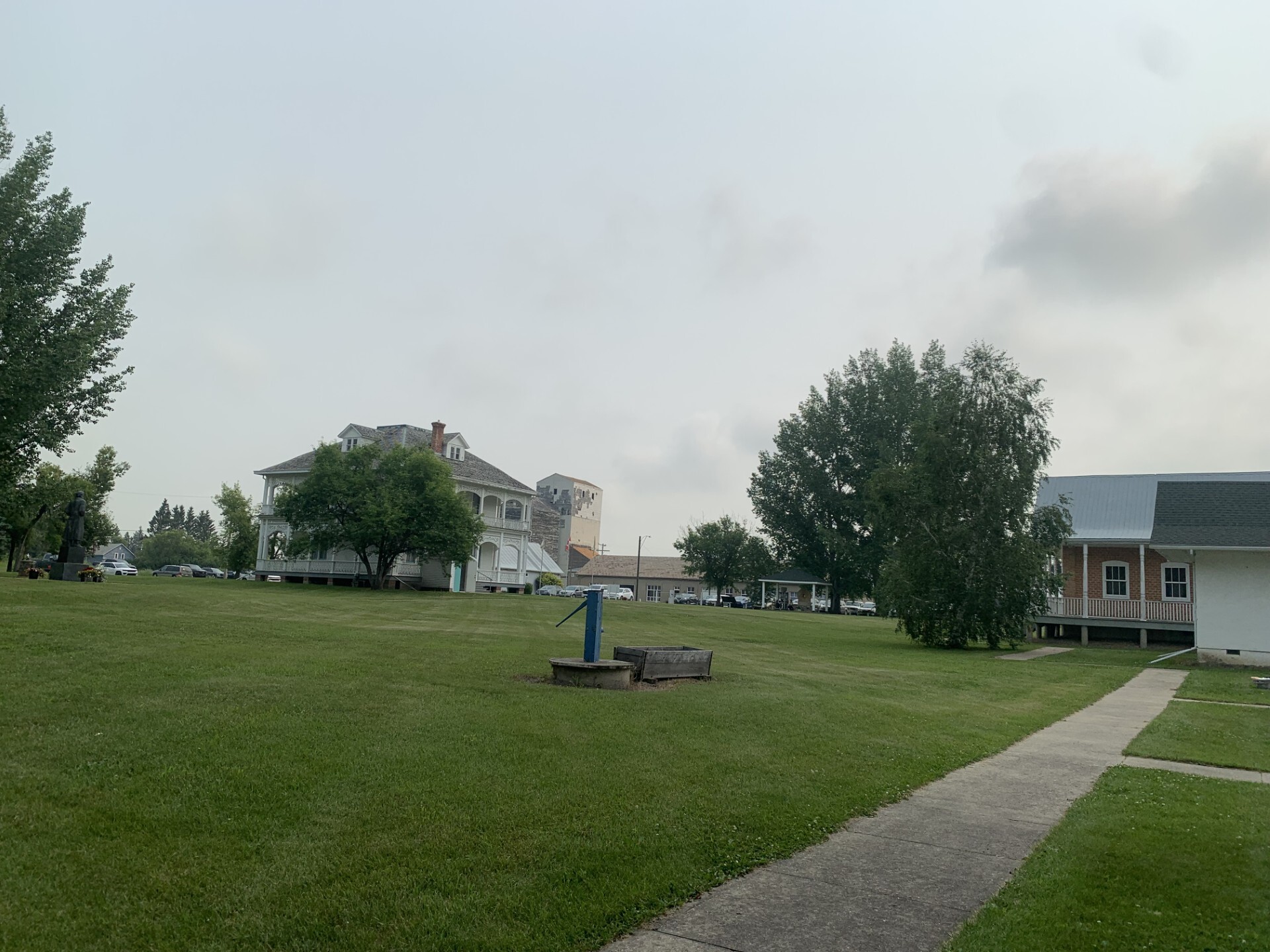Jul 30, 2024 By Cat Woloschuk, Summer Researcher (2024) When I was growing up, I was fortunate to have parents who saw the value in ensuring that my sister and I were connected to our Doukhobor heritage, understood where our family came from, and had knowledge of the hardships faced by our ancestors. Growing up in Yorkton (affectionately referred to as the “Garlic Belt” or “Garlic Curtain” of Saskatchewan due to the high rate of Ukrainian/Eastern European settlers) allowed me to experience pieces of my ancestral heritage throughout my youth, even if I didn’t fully grasp the importance of participating in various aspects of tangible and intangible cultural heritage at that age. While I was working on my Master’s degree in History, I began to think about the way I interacted with heritage in my youth and the way I interacted with it as an adult. Heritage spaces are welcoming spaces. They're places of learning, building community relationships, and connecting with living heritage. The fond childhood memories I have of visiting the National Doukhobor Heritage Village (NDHV) in Verigin largely inspired me to seek out a way to be involved with safeguarding the cultural heritage of my ancestors to ensure that future generations can experience the incredibly meaningful connection to history and heritage that I had in my youth. From picking out the best-looking loaf of Doukhobor bread to listening to the choir performances to getting annoyed (like impatient kids tend to do) when my sister and I wanted to leave but my grandfather couldn’t walk three feet in any direction without having to stop and chat with someone he knew – these memories bring a smile to my face and fill my heart with so much loving nostalgia. I was welcomed with warmth and open arms when I walked into the Saskatoon Doukhobor Society’s Prayer Home nearly two years ago. The mentorship and connections I have made with so many thoughtful, kind, deeply knowledgeable individuals from the Saskatoon Doukhobor Society and across Saskatchewan have enriched my life significantly. I’ve connected to my cultural heritage by being part of the choir and hearing songs that I remember listening to during my childhood, travelling to Verigin to help with special events and singing with the Verigin choir, helping out at the bread baking booth at the Saskatoon Ex with the Saskatoon Doukhobor Society, participating in historical reenactments while wearing my Great-Grandmother’s outfit (that she had sewn herself – my mom kept the outfit in excellent condition before passing it on to me!) at the Doukhobor Dugout House National Historic site near Blaine Lake, and getting together after Moleniye for a potluck of Doukhobor dishes and lively conversations. The wonderful people involved in keeping Doukhobor heritage alive across Saskatchewan have been enthusiastic to have interest from someone from a younger generation. It’s more important than ever that youth and younger people get involved in heritage so that current and future generations can enjoy the meaningful connections and create memorable experiences that living cultural heritage has to offer. My passion for heritage was largely born out of the positive memories and experiences my mom facilitated when my sister and I were kids. It’s a way for me to feel connected to family members who are no longer with us and a way for me to connect with the Doukhobor community. The common phrase, “you don’t know what you’ve got ‘til it’s gone,” strikes a chord with me because I often wish I could listen to the stories my grandfather used to share about his life and ask him questions about our Doukhobor ancestry. I’m lucky that there are Doukhobor elders that I can connect with and who so willingly share their knowledge, so that I can continue to keep the living heritage of Doukhobors alive. Childhood Memories Inspire Me to Keep Living Heritage Alive
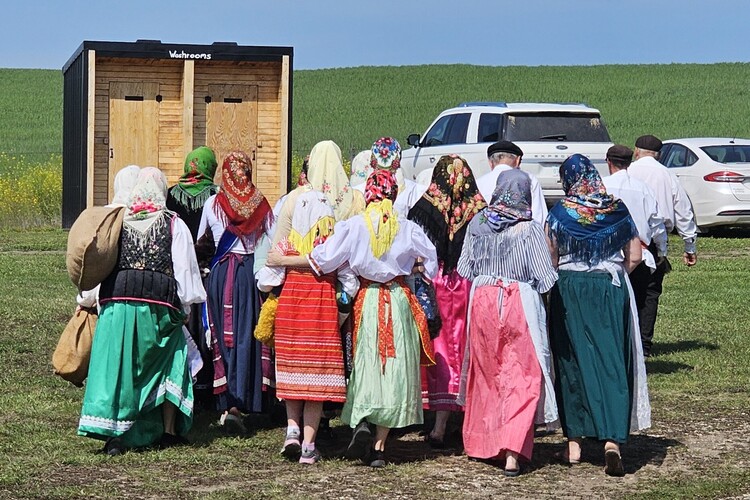
Images

